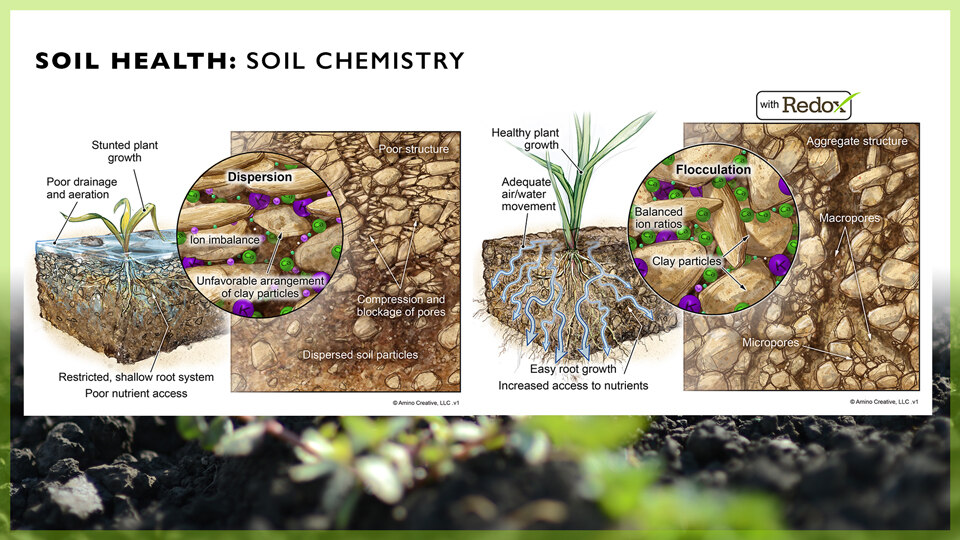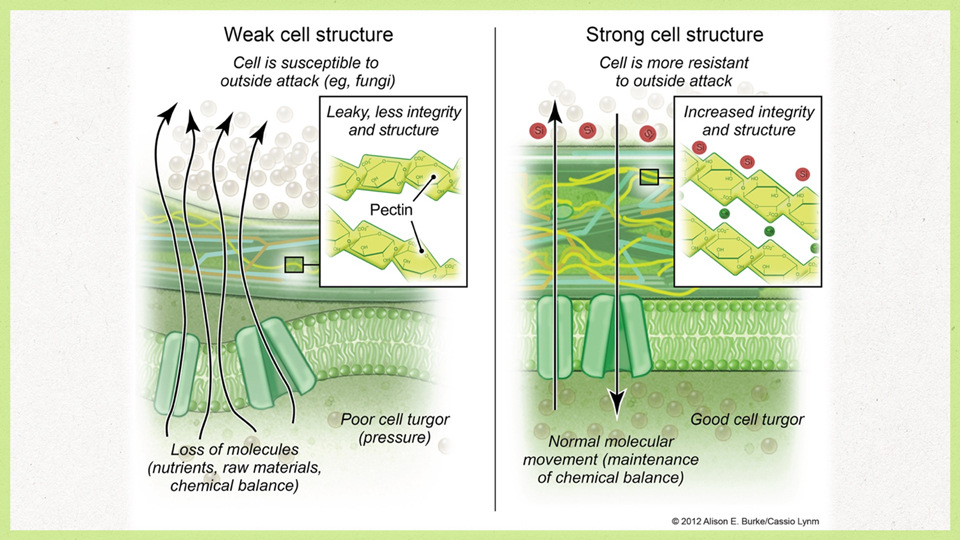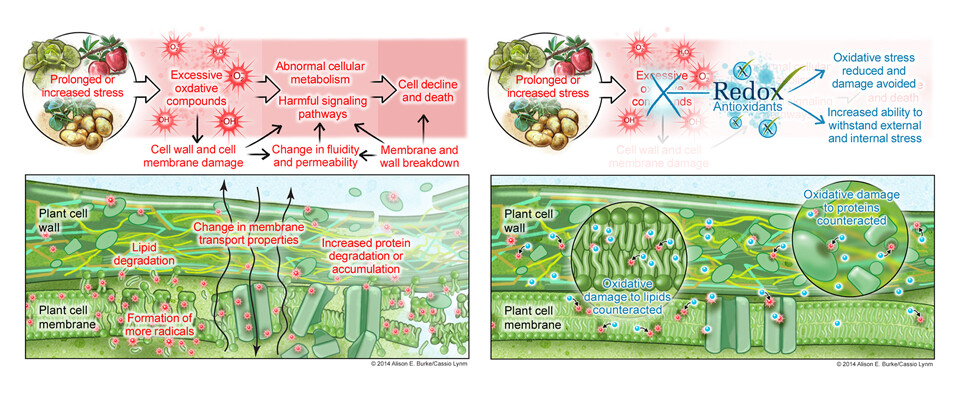Calcium plays a critical role in crop yield and quality. To understand the function and role in agronomy, it should be understood from a plant point of view, and from a soil point of view. It is critical that plant calcium nutrition be addressed early and adequately. It is equally critical that soil calcium is constant and consistent throughout the growing season to maintain soil structure.
Soil
Calcium is important in soil structure. Calcium in soils comes in many forms. Calcium is present in most soils as insoluble calcium carbonate (CaCO3-). When high levels of phosphoric acid are utilized in agricultural cropping systems, most of the phosphorous is tied up with ionic calcium to form insoluble calcium phosphate (CaPO4). Only ionic calcium (Ca++) is able to affect soil function and structure. To maintain soil structure, soils must maintain adequate levels of ionic calcium.

The divalent positive charge of ionic calcium (Ca++) interacts with the negatively charged soil colloid to create soil flocculation. Calcium and organic matter have the strongest effect on soil flocculation. Soil structure is influenced in the micropore spaces of the soil where air and water exchange are taking place on a capillary scale. Since much of the calcium is in the form of insoluble calcium carbonate or calcium phosphate, it is important to manage soil biology and soil chemistry so that these insoluble calcium compounds may be broken to yield ionic calcium. Soil biology and soil humic matter are critical to improving soil ionic calcium content.
Plant
Plants can only absorb the ionic form of Calcium (Ca++). As mentioned in the soil section, maintaining ionic calcium is very important in maintaining or improving soil structure. Equally important is the availability of calcium for plant nutrition, yield, and quality.
Calcium plays several critical roles in plant nutrition, namely cell wall structure and stabilization, membrane structure and function, root growth and development, and plant cell signaling.
Cell wall Structure and Stabilization
The majority of plant calcium is found in the plant cell walls, mainly in the outer portion of the plant cell wall (middle lamella). Pectin is a structural carbohydrate in plants. Plants higher in calcium will form calcium pectate. Calcium pectate is the main form of pectin in plant cell walls. The amount of calcium and calcium pectate in cell walls directly affects the form and function of the plant cell wall. Plants high in calcium pectate will have improved cell wall structure and will be less susceptible to invasive disease and insects.

Membrane Stabilization and Function
Plant cell membranes act as barriers to the movement of molecules. In plants, active solute transport will improve overall plant quality and reduce pest and pathogen presence. Calcium acts in plant membranes to improve active solute transport thru the membrane by bridging phosphate and carboxylate compounds and binding them to the membrane surface. This calcium function stabilizes the cell membrane and reduces leakage and/or passive movement of cell solutes. Reducing leakage and passive movement of cell solutes will reduce invasive pests and pathogens.
Root growth
In the absence of soil solution calcium, root growth will cease. Calcium is critical for root cap formation and strength, and thus for root growth and development. Directly behind the root cap is the zone of highly active cell division, promoting root growth. As calcium is critical in cell structure and membrane stability, he soil solution concentration of calcium will determine root growth and structure.
Plant Cell Signaling
Plant cells have the ability to communicate abiotic or biotic pressure and communicate via calcium binding proteins within plant cells. As environmental stresses change, calcium will bind to proteins based on what the environmental stress is. This in turn will dictate physiological and metabolic changes in the plant to respond to the stress event, allowing the plant to adapt and thus reducing the negative influences of stress.

How to influence calcium nutrition.
To study calcium agronomically is to study both soil and plant. You cannot have adequate soil ionic calcium for improved soil structure without plant influence (soil biology and organic matter). Conversely you cannot have adequate plant calcium nutrition without proper soil structure. One acts on the other. It is critically that from an agronomic perspective, action is taken to improve soil biology to maintain adequate soil structure and plant available calcium.
At Redox, we provide calcium in a microencapsulated form. As water is added, the microencapsulation is influenced, and ionic calcium is released into the environment Microencapsulation is important in that it prevents calcium tie-up and allows calcium to be transported via water movement to soil micropores. It is in these micropores that calcium is influential in improving soil structure.
Microencapsulation is also important in calcium plant nutrition. As the plant absorbs water, it also absorbs the minerals in the water. Microencapsulated calcium is able to be absorbed into plant roots via water transpiration. Once inside the plant, the microencapsulation is broken down, and ionic calcium is delivered to the plant for utilization in metabolic processes.
The importance of the microencapsulation process cannot be overstated. During early season growth, it is not possible for the soil solution to provide the demands of high yielding crops.
Questions? Want to know more about Calcium in Soil Structure and Plant Nutrition?
Subscribe to receive our Redox Bio-Nutrients updates